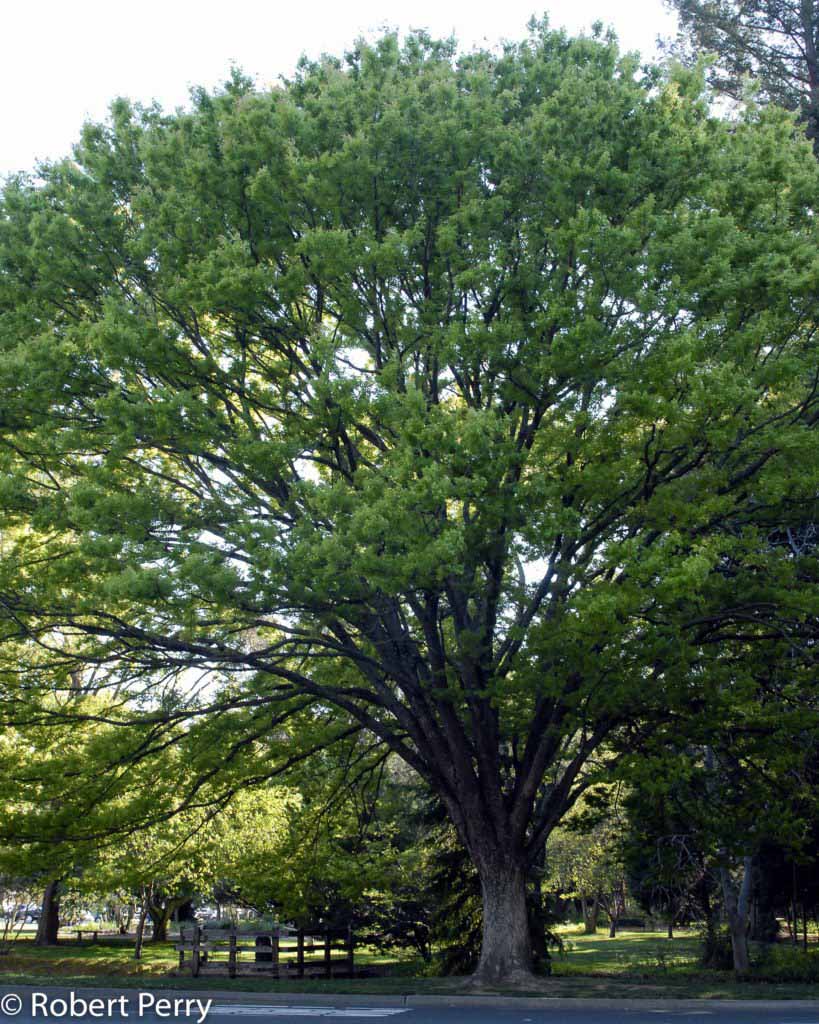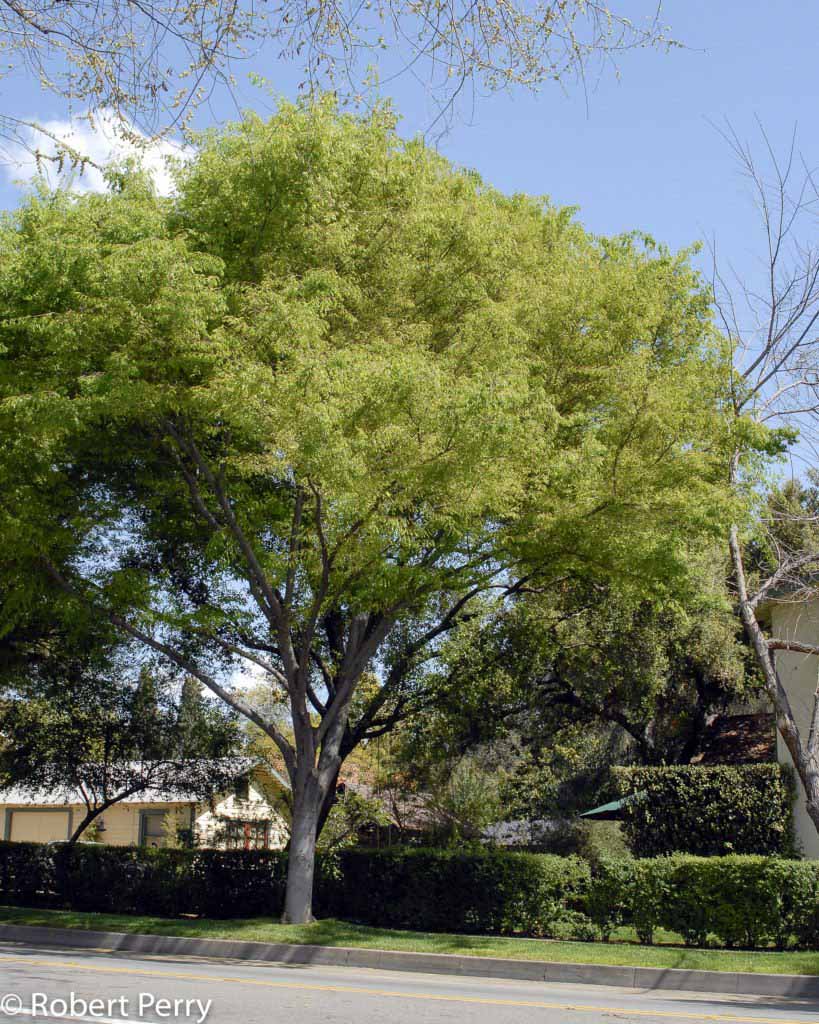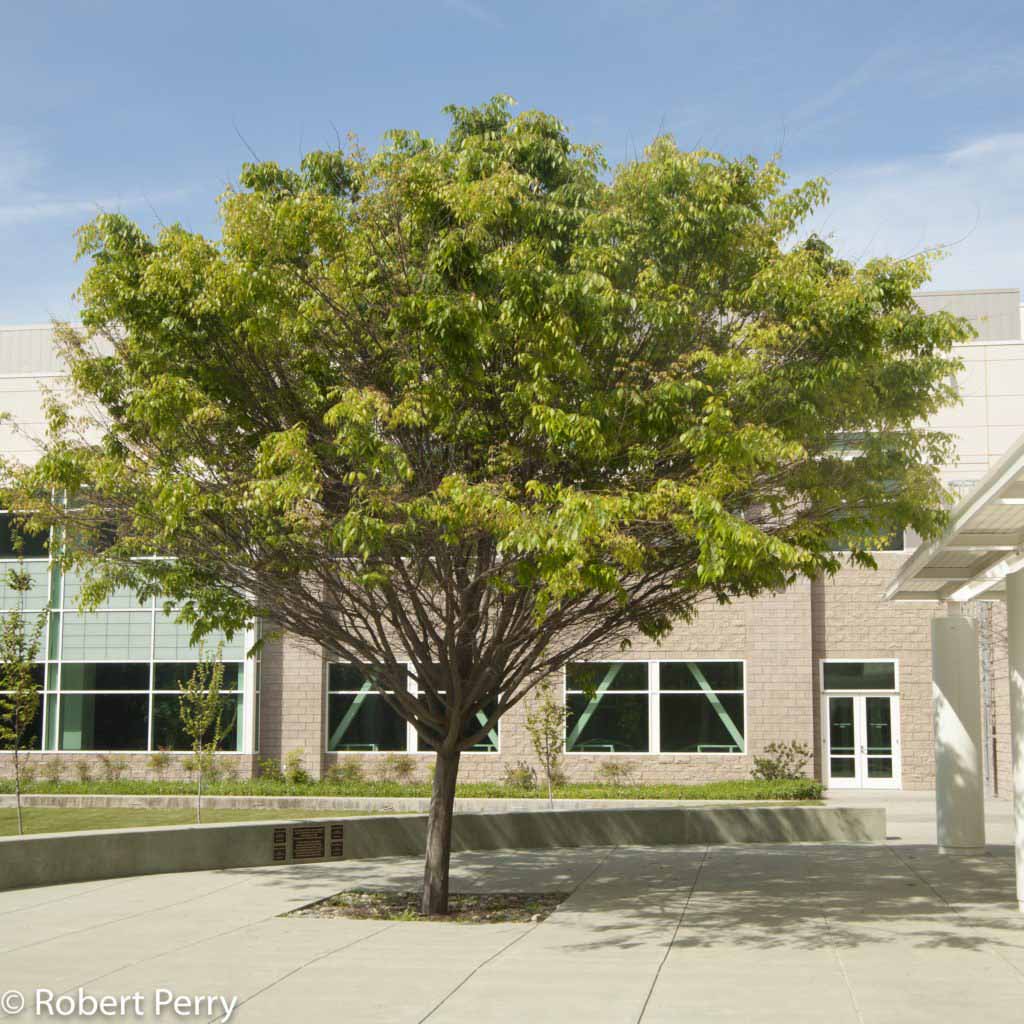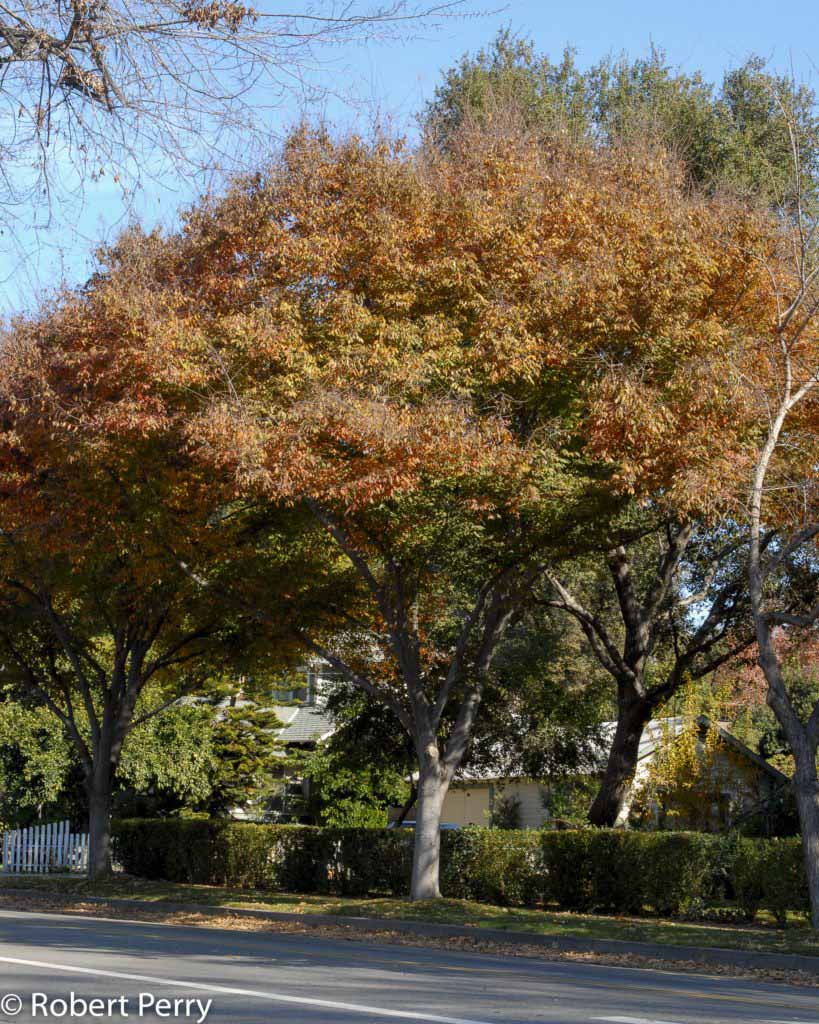Please note:
For most situations, we would not recommend installing this plant in new gardens, landscapes, or plantings in southern California.
In large public spaces like park, it is a large tree species that will survive when planted in lawns and regularly watered.
Our top recommendations to consider instead of this tree include Western Sycamore for a large deciduous tree and Coast Live Oak if a large evergreen tree is desired for an area that will not receive regular watering after establishment.
This plant profile is included in this site as a reference for two primary reasons:
- If you already have this plant in your landscape, this information can be used to know how to care for it.
- If you already have this plant in your landscape, you can use this information to learn which of our recommended plants have the same recommended watering needs, making them potential choices for grouping together if you will be adding new plants to the existing area.
In general, instead of this plant, we recommend planting appropriate California native plants whenever possible.
In addition to their beauty, California native plants offer the most additional benefits beyond just low water use, including habitat for the birds, butterflies, and pollinators who evolved here with them. This adds value and beauty in your landscape beyond just a pretty plant, allowing the landscape to actively contribute to the environment instead of just using less water. You can find our top recommended native plant choices on our Plant Finder by selecting “California Native” and learn more about California native plants here.
To learn what exactly California native plants are and how they are different from other low water plants, visit this link.
For visual interest or other reasons, some people may also want to mix in other non-native low-water demanding plant choices even though they do not have the same ecological value as native plants. For that reason, we feature a number of non-native waterwise selections on this site as well. However, we see native plants as the best “go to” for most landscape or garden choices! We encourage people to consider planting at least 50% of their landscape to native plants. See our Garden Designs section or visit our Waterwise Demonstration Garden in Montclair for plenty of inspiration.
————————————————————————————————————————————————
The Sawleaf zelkova grows into a medium to large size deciduous tree with a moderate growth rate that commonly reaches 40-50 ft. high and as wide. Young plants quickly develop an upward vase-shaped form; mature plants age with dome-shaped canopies. Fall foliage colors of red, orange and yellow will occur during cool fall temperatures. Foliage is comprised of simple, 2-3 in. long leaves that have coarsely serrated margins.
Sawleaf zelkova is native to moist and cool climate zones of eastern China, Korea, Taiwan and Japan. It is best adapted to rich soils with regular water and cold winters; these conditions lead to faster growth rates and larger sizes. As a result, the largest trees growing in California are often grown in lawns where they receive regular water. However, this species has proven to be widely adapted to many conditions, enduring heat, aridity and short periods of drought as it matures. It is mostly valued as a broad canopy shade tree and for its reddish fall color.



